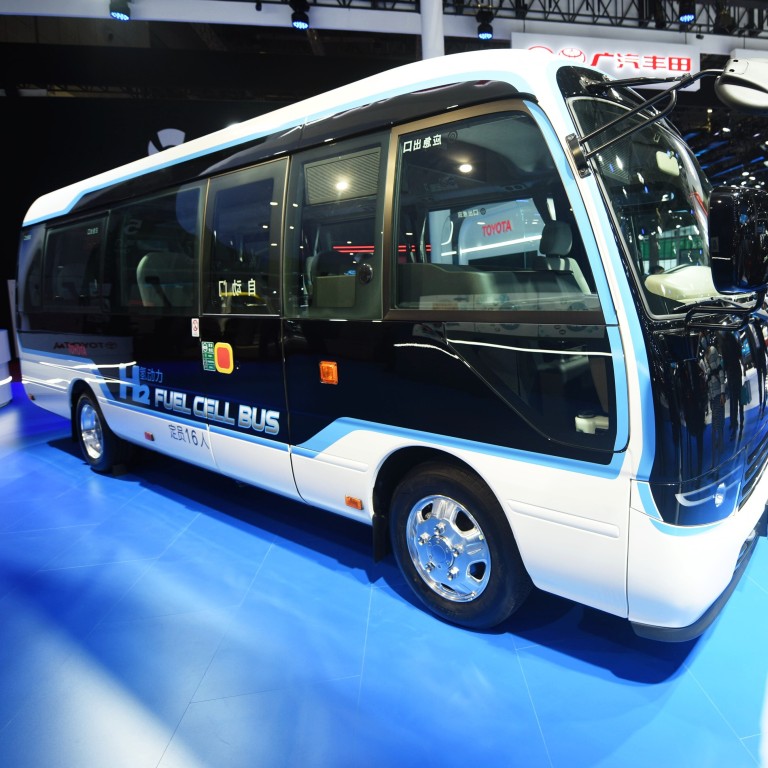
Climate Change: Sinopec urges faster government policymaking to kick-start green hydrogen transport in Hong Kong
- The oil giant has been lobbying the government to speed up policymaking that would enable the zero-emission fuel to be introduced sooner
- Hong Kong’s proximity to Guangdong province, which has hydrogen production facilities, would make it easy for the city to get supplies, says a senior Sinopec executive
“Development has been a bit slow in Hong Kong, especially commercial vehicles … it takes time to develop the supply chain.”
The feedback has been positive after discussions with various government departments, he added.
There are a quarter as many commercial vehicles as private ones in Hong Kong, but their carbon emissions are 2.7 times higher, said Poon.
He was speaking after Sinopec HK’s lucky draw ceremony announcing 230 winners of prizes worth HK$1.68 million (US$220,000) to encourage Covid-19 vaccinations.
The Hong Kong government will set up a new task force to explore opportunities in green hydrogen to achieve “deeper decarbonisation”, environment minister Wong Kam-sing said in May.
The government is expected to announce an updated 2030 climate action plan before the end of the year, which is likely to give more details on the implementation of policies to encourage hydrogen adoption in transportation.
Hong Kong bus operator KMB was interested in exploring hydrogen fuel-cell technology to achieve zero emissions for its fleet of double deckers, the company’s UK-based technology partner Wrights Group said in 2018.
Because of Hong Kong’s proximity to Guangdong province, which has hydrogen production facilities, it would not be difficult for the city to get supplies, Poon said.
Foshan, 133km northwest of Hong Kong, is home to some 448 zero-emission delivery trucks and 1,000 green buses powered by hydrogen – the most in China. The city is also a hub for hydrogen supply chain development.
Hydrogen’s use as a fuel could grow sixfold in the next three decades to meet 10 per cent of total energy consumption by 2050, according to the Paris-based International Energy Agency.
However, to be truly environmentally-friendly, hydrogen fuel needs to be emissions-free across the supply chain, not just on the roads.
Nearly all of the 90 million tonnes consumed last year were made from fossil fuels, which resulted in almost 900 million tonnes of carbon dioxide being spewed into the atmosphere, the IEA said in a report released on Monday. Low-carbon hydrogen is not yet competitive, but it is on the cusp of significant cost declines and widespread global growth.
Global capacity for green hydrogen – which uses renewable energy to break down water into hydrogen and oxygen with no pollutants – has doubled in the past five years to 0.3 gigawatts. Projects under development could raise that to 54GW by 2030, while another 35GW of capacity are under early development, the report said.
If all those projects are realised, global green hydrogen supply could reach more than 8 million tonnes by 2030.
“While significant, this is still well below the 80 million tonnes required by that year on the pathway to net-zero carbon dioxide emissions by 2050,” the IEA said. “Governments need to move faster and more decisively on a wide range of policy measures to enable low-carbon hydrogen to fulfil its potential to help the world reach net zero emissions while supporting energy security.”

